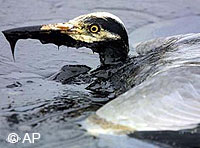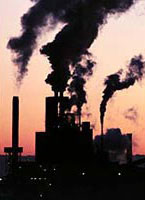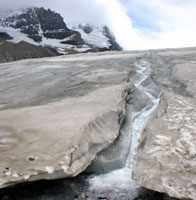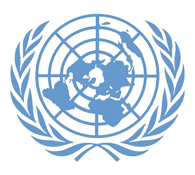
News |
- Honeybees: Death Rate Outpacing Action
- Clean Beaches In Canada & Manitoba
- California: No More Microbeads
- Oil Industry Not Ready For Spills In Arctic
- Enbridge Line 9 Blockaded
- Air Pollution More Dangerous Than Cars
- Melting BC Glaciers Will Affect Sea Levels
- Triclosan Safety Concerns Alarming
- Ocean Levels' Rise Inevitable: Polar Ice To Melt
- UN Urges Canada To Consult First Nations
- Manitoba Upgrading Water And Waster Water Facilities
- Boreal Forest A Bird Nursery
| Honeybees: Death Rate Outpacing Action | 6 June 14 |

A recent study from Harvard, published on March 27th, 2014, has definitively confirmed what scientists outside the US have been saying for years: neonicotinoids are the cause of colony collapse disorder(CCD). The study showed that 50% of colonies populated by bees who had been in contact with these pesticides collapsed, compared to only 1 in 6 not in contact with neonicotinoids. The study published in the June edition of the Bulletin of Insectology, concludes that corn, potato and soybean pesticides containing neonicotinoid chemicals are directly to blame for colony collapse disorder (CCD). Worker bees are thought to absorb trace amounts of the neonicotinoids during the pollination process before bringing those chemicals back to the hive.
View June 3, 2014 Live Free Live Natural article |
|
 Print version Print version |
Top |
| Clean Beaches In Canada & Manitoba | 30 May 14 |

Blue Flag is a highly respected and recognized international eco-label. Blue Flags are awarded to beaches and marinas that meet strict criteria for water quality, environmental education, environmental management, and safety and services. Blue Flags are flying at 24 beaches and 4 marinas in Canada. Environmental Defence Canada manages Blue Flag Canada. Three Manitoba beaches have received Blue Flag status, which recognizes them around the world as clean and safe beaches. The main beach at Winnipeg Beach Provincial Park and the west beach at Grand Beach Provincial Park are certified by Blue Flag Canada.
View May 28, 2014 Environmental Defence article |
|
 Print version Print version |
Top |
| California: No More Microbeads | 30 May 14 |

Source: 5 Gyres
"Legislation levels the playing field," said Stiv Wilson of 5 Gyres. The ball began rolling early last year when another organization in Europe called the Plastic Soup Foundation campaigned heavily resulting in the company Unilever banning microbeads in their products by 2015.
View May 24, 2014 EcoWatch article |
|
 Print version Print version |
Top |
| Oil Industry Not Ready For Spills In Arctic | 30 May 14 |

A changing climate is increasing the accessibility of U.S. Arctic waters to commercial activities such as shipping, oil and gas development, and tourism, raising concern about the risk of oil spills. The report from the National Research Council says that proven oil response tools are needed to address potential oil spills in arctic waters, but not all of them are readily available. "The lack of infrastructure and oil spill response equipment in the U.S. Arctic is a significant liability in the event of a large oil spill," the report warns. "Building U.S. capabilities to support oil spill response will require significant investment in physical infrastructure and human capabilities, from communications and personnel to transportation systems and traffic monitoring."
View May 27, 2014 EcoWatch article |
|
 Print version Print version |
Top |
| Enbridge Line 9 Blockaded | 24 May 14 |

The group comprised of environmentalists, local residents, and members of First Nations, arrived and turned away Enbridge Oil employees from a work site. The protesters say Enbridge is preparing the pipe to carry tar sands bitumen across Ontario eastward through Quebec into the United States through Vermont and on to the Maine coast for export. The work being done on the site is called an "integrity dig," where a section of pipe is unearthed to fix a crack, dent or corrosion. According to Burlington resident Brian Sutherland, Line 9 has nearly 13,000 such structural weaknesses along its length, “and yet Enbridge is only doing a few hundred integrity digs." The Line 9 pipeline is 40 years old, and would be reversed to carry bitumen.
View May 20, 2014 Common Dreams article |
|
 Print version Print version |
Top |
| Air Pollution More Dangerous Than Cars | 24 May 14 |

Outdoor air pollution kills more than 3.5 million people a year globally, far more than was previously estimated. Air pollution has now become the biggest environmental cause of premature death, overtaking poor sanitation and a lack of clean drinking water. Air pollution is mainly associated with asthma, other lung conditions and cardiovascular diseases. Exhaust fumes from diesel, a known carcinogen, are tied to lung cancer. A 2008 federal report estimated that on an annual basis, there are 306 premature deaths, 1,158 hospital admissions, and 8,763 emergency department visits related to air pollution in British Columbia. The United Nations, and Canadian Medical Association both see see air pollution and climate change as contributors to premature deaths.
View May 22, 2014 E&E Publishing article |
|
 Print version Print version |
Top |
| Melting BC Glaciers Will Affect Sea Levels | 24 May 14 |

According to the National Climate Assessment report, glaciers in the region are losing 20 to 30 per cent of what is melting annually from the Greenland Ice Sheet, which has received far more worldwide attention. The glacial decline in western Canada and Alaska significantly contributes to sea level rise, said the U.S. report. There are 200,000 glaciers on Earth, 17,000 of them in British Columbia. Another 800 are in Alberta.
View May 18, 2014 Huffington Post article |
|
 Print version Print version |
Top |
| Triclosan Safety Concerns Alarming | 24 May 14 |

In a new study published in the Proceedings of the National Academy of Sciences, researchers from the University of California, Davis, found that triclosan also interferes with muscle function. In the lab, they exposed human muscle cells, from the heart and elsewhere, to triclosan and discovered that the chemical interrupted cellular communication necessary for muscle contraction. An initial assessment, conducted by Environment Canada and Health Canada in 2012 was inconclusive.
View May 19, 2014 Time article |
|
 Print version Print version |
Top |
| Ocean Levels' Rise Inevitable: Polar Ice To Melt | 16 May 14 |

Climate scientists have concluded that widespread burning of fossil fuels is releasing heat-trapping gases that are warming the planet. While this will produce a host of effects, the most worrisome may be the melting of much of the earth's ice, which is likely to raise sea levels and flood coastal regions.
View May 15, 2014 EcoWatch article |
|
 Print version Print version |
Top |
| UN Urges Canada To Consult First Nations | 16 May 14 |

In a report released Monday, May 12th, the UN's special rapporteur on the rights of indigenous people, James Anaya, said aboriginal Canadians have expressed concerns over a number of proposed resource projects that they fear will pollute their traditional lands, including Enbridge Inc.'s Northern Gateway and Kinder Morgan's TransMountain expansion. The report, citing the UN Declaration on international human rights, says, "In accordance with the Canadian constitution and relevant international human rights standards, as a general rule resource extraction should not occur on lands subject to aboriginal claims without adequate consultations with, and the free, prior and informed consent of, the indigenous peoples concerned." "The way it's supposed to work is that whenever these rights are affected, there needs to be consultation and agreement about any decision that would limit those rights in order to, in the end, protect them." Mr. Anaya said in an interview. "Whenever someone goes onto someone's land, there needs to be permissions sought and some kind of agreement."
View May 13, 2014 The Vancouver Sun article |
|
 Print version Print version |
Top |
| Manitoba Upgrading Water And Waster Water Facilities | 16 May 14 |

The money is for distributed through the Manitoba Water Services Board. Municipalities will be expected to match any monies they receive. There will also be opportunities for municipalities to apply for federal funds through a new Building Canada program. Municipalities are already applying for funding for projects, said Doug Dobrowolski, president of the Association of Manitoba Municipalities, who sits on the water services board. New projects already approved include $1.5 million for water supply upgrades in the RM of MacDonald to meet increasing water demands in Oak Bluff, and $1 million in upgrades and the expansion of the waste-water lagoon in the Local Government District of Pinawa that will benefit residents and the Tim Horton's children's camp. "We are long overdue to make sure municipalities take water conservation steps before or as a condition of new capital funding. It appears Manitoba has not put a requirement in place." said Gaile Whelan-Enns, Director at Manitoba Wildlands.
View April 30, 2014 Winnipeg Free Press article |
|
 Print version Print version |
Top |
| Boreal Forest A Bird Nursery | 16 May 14 |

Approximately 1.2 billion acres of boreal forests are still nearly pristine, free of industrial development. The vast boreal forest includes a surprising variety of habitats and landforms: thick coniferous forests, glacier-capped mountains, sprawling peatlands, and some of the world's largest lakes, rivers, and networks of wetlands. It is globally-recognized as one of the world's last strongholds for migratory mammals, particularly for herds of caribou, collectively numbering in the millions—that travel thousands of miles each year.
View May 4, 2014 The Telegram article |
|
 Print version Print version |
Top |


 RSS Feeds:
RSS Feeds: